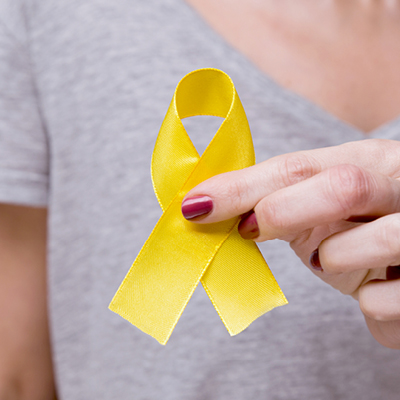Vitality eNews Sign Up
Receive the Summa Health eNewsletter for the latest health tips, advice and updates.
Heavy, painful periods? It could be endometriosis.
Posted March 15, 2021 by Megan A Cesta, MD

Endometriosis is not PMS, or premenstrual syndrome. It is not pain from your period because endometriosis overlaps with a woman’s cycle, many chalk up the symptoms to just a “bad period.” Severe endometriosis may even lead to pain outside of your period.
Endometriosis is caused by endometrial (uterine) cells located elsewhere in the pelvis, outside the uterus. If you’re suffering from endometriosis, tissue that is similar to the uterine lining — known as the endometrium — can grow in other places in your body, such as outside the uterus, on the ovaries, fallopian tubes, bladder or bowels.
Just like the tissue is shed from the uterus each month during your period, the tissue in these other places can shed as well. This can cause extreme pain in the pelvic area, heavy bleeding and other possible complications.
Endometriosis can be a debilitating and very painful condition that can lower your quality of life. The severe pain can cause you to miss work, school or social gatherings.
Summa Health discusses endometriosis risk factors, common symptoms and treatments to help you reduce your pain and get your life back.
Risk factors
It is estimated about 10 to 15 percent of women of childbearing age suffer from endometriosis, according to the National Institute of Health. Though endometriosis can affect any woman who menstruates, it is most common in women in their 30s and 40s. The average time from symptoms to diagnosis for women is up to 8 years.
You could be at a higher risk for endometriosis if you:
Symptoms
It can be difficult to distinguish symptoms from endometriosis because the pain can come around the same time as a period.
Common symptoms to watch for include:
If you’re experiencing severe pain in the pelvic area, it’s important to talk with your doctor. Pelvic pain can be caused by endometriosis or several other conditions, including pelvic floor disorders, urinary and vaginal infections, and ovarian cysts.
Diagnosis and treatment
The most effective way to diagnose endometriosis is through a minimally invasive surgical procedure called laparoscopy. A tiny camera attached to a thin tube is used to look deep into your pelvic area to spot endometrial cell implants. If cells or unusual tissue is found, your doctor will take a biopsy to provide a clear diagnosis.
Ultrasounds, CT or MRI scans also may be used to look for large cysts to diagnose the condition.
Though there is no cure for endometriosis, there are treatments available to bring you relief. The most common treatment for endometriosis is over-the-counter pain medication, such as ibuprofen.
Another common option is hormonal regulation as a way to lighten, skip or even stop a menstrual cycle to alleviate the pain that comes with a period.
In some severe cases, surgery can be used to remove scar tissue or the misplaced endometrial cells. However, this is not a permanent solution.
Medication to lower your hormone levels, or partial medical menopause may help for a short amount of time in specific circumstances. In very rare cases, removal of the uterus, tubes and ovaries can also be considered
The more you know about endometriosis, the faster you can get treatment and relief. You deserve it!

